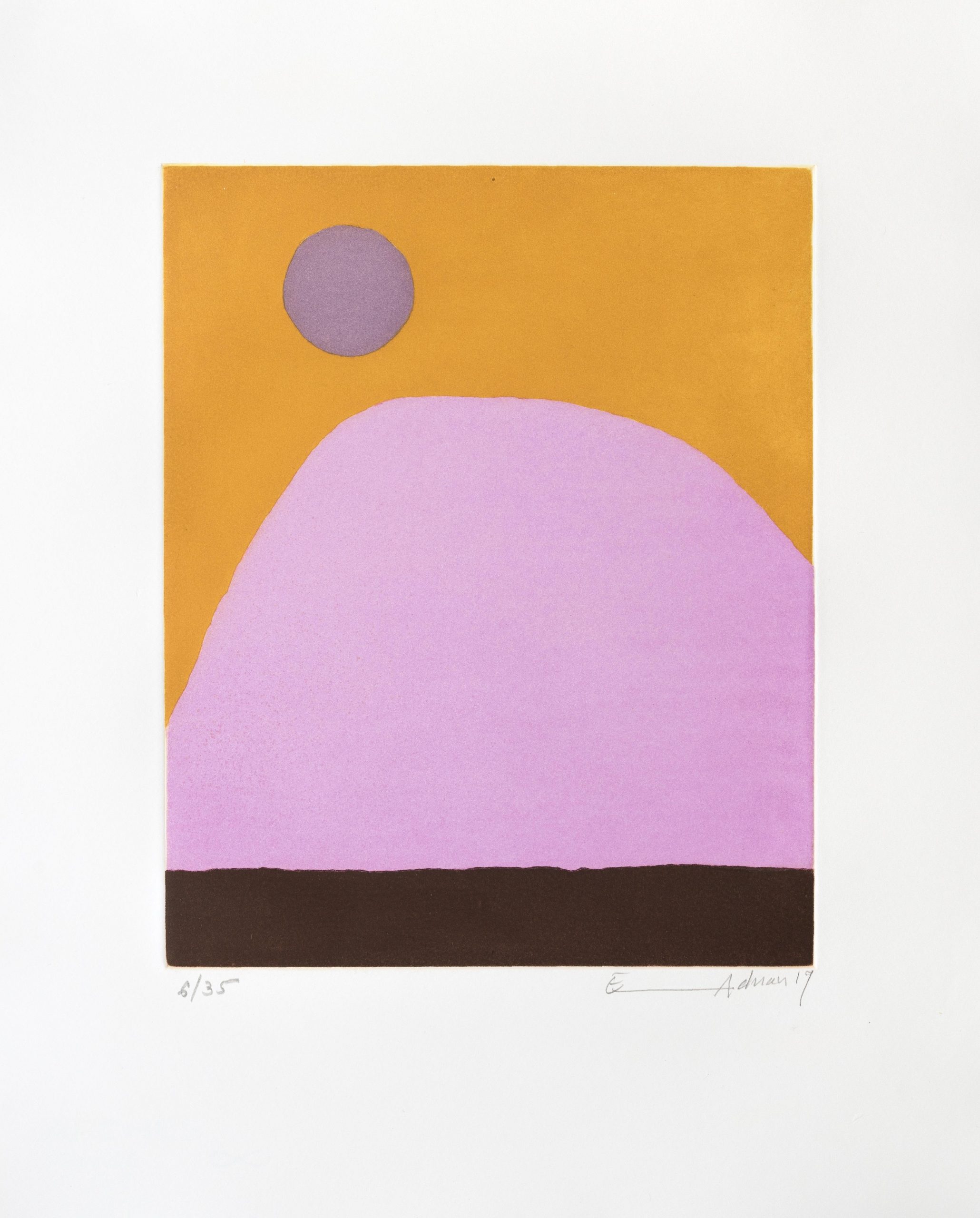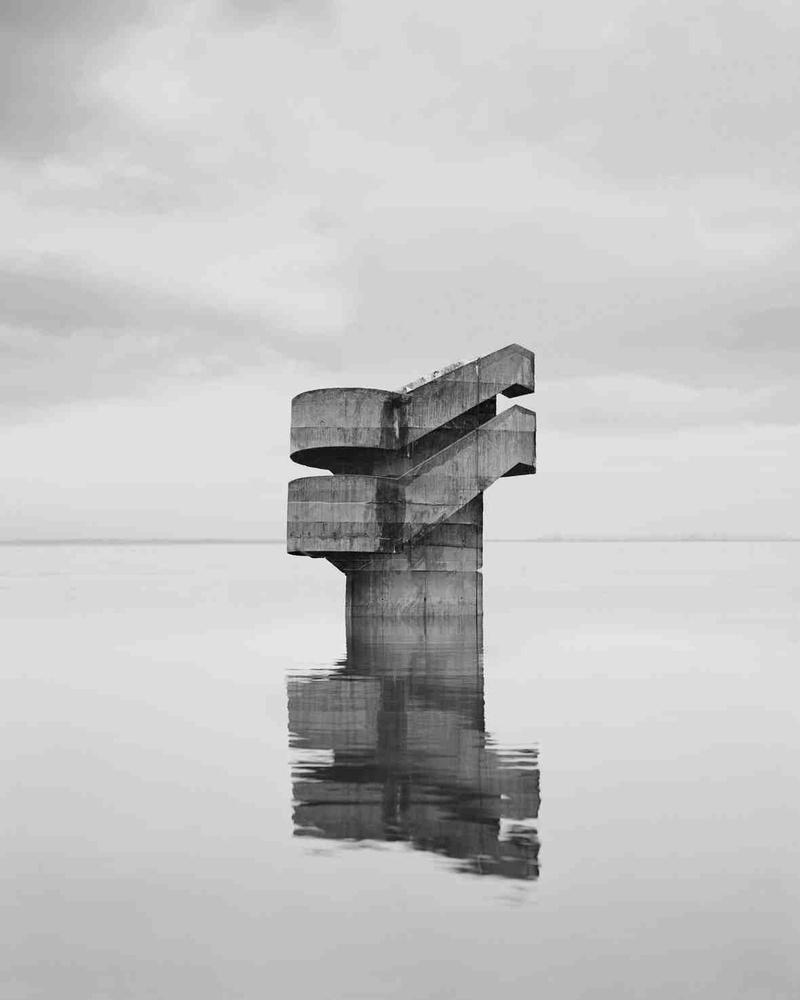Published:
What do you do to escape the everyday?
For British painter Gary Hume, both making and viewing art provide a means of escape. Art invites us to explore new worlds and may change our perspectives along the way. This autumn, Hume selects important works from the Hiscox Collection for his exhibition, Accelerate your escape, featuring renowned artists including Keith Coventry, Nan Goldin, Howard Hodgkin, David Hockney, Eduardo Paolozzi, Thomas Ruff and more.
As we ponder art’s ability to transport us elsewhere, we’re highlighting two works in Hume’s display that take us to unexpected faraway places – including Noémie Goudal’s deserted brutalist landmarks and Etel Adnan’s colourfully painted environments.
Keep your eyes peeled for our latest Art in the Heart of East London posters, which bring these imaginative environments to the East End.

Writer and artist Etel Adnan (b. 1925, Lebanon) is widely known for her poetry, novels and plays as well as her painting. Her recent work is painted from memory, featuring landscapes distilled into their definitive features: like after-images of an experience that remain particularly vivid. Horizon lines, mountains or sky-scapes are represented as flat mounds or triangular or pyramidal forms in flat, undiluted, vibrant colours.
This one really is about liking its similarity to my own work. There’s this strange thing where I think I invest the work that I make with a sense of itself, and I think that sense is palpable to other people too. I believe if I’d made this I would recognise instantly what that supposedly palpable sense is, and I don’t recognise it, so what does it do then? Sometimes I see work that looks a bit like mine, and I think it’s rubbish. Of course I don’t think that this is rubbish. (Gary Hume)

Noémie Goudal’s (b. 1984, France) photographs consider the relationship between the man-made and the organic. The artist constructs large-scale installations out of card or paper, which she then photographs in locations throughout the world, including brutalist buildings, dilapidated barns, dense forests and remote coastal landscapes.
I was drawn to these works because I love The Jantar Mantar observatories in Jaipur. I love the monumental stillness, the abstract quality, and then of course, it’s all rubbish. This isn’t a real observatory down on the Kent coast; it’s just glued together pieces of paper from photocopied imagery. After the photograph was taken, everything was discarded, leaving just the image. It’s not disappointing that the material is poverty-stricken. Out of poverty-stricken material can come gems; it’s a metaphor. (Gary Hume)